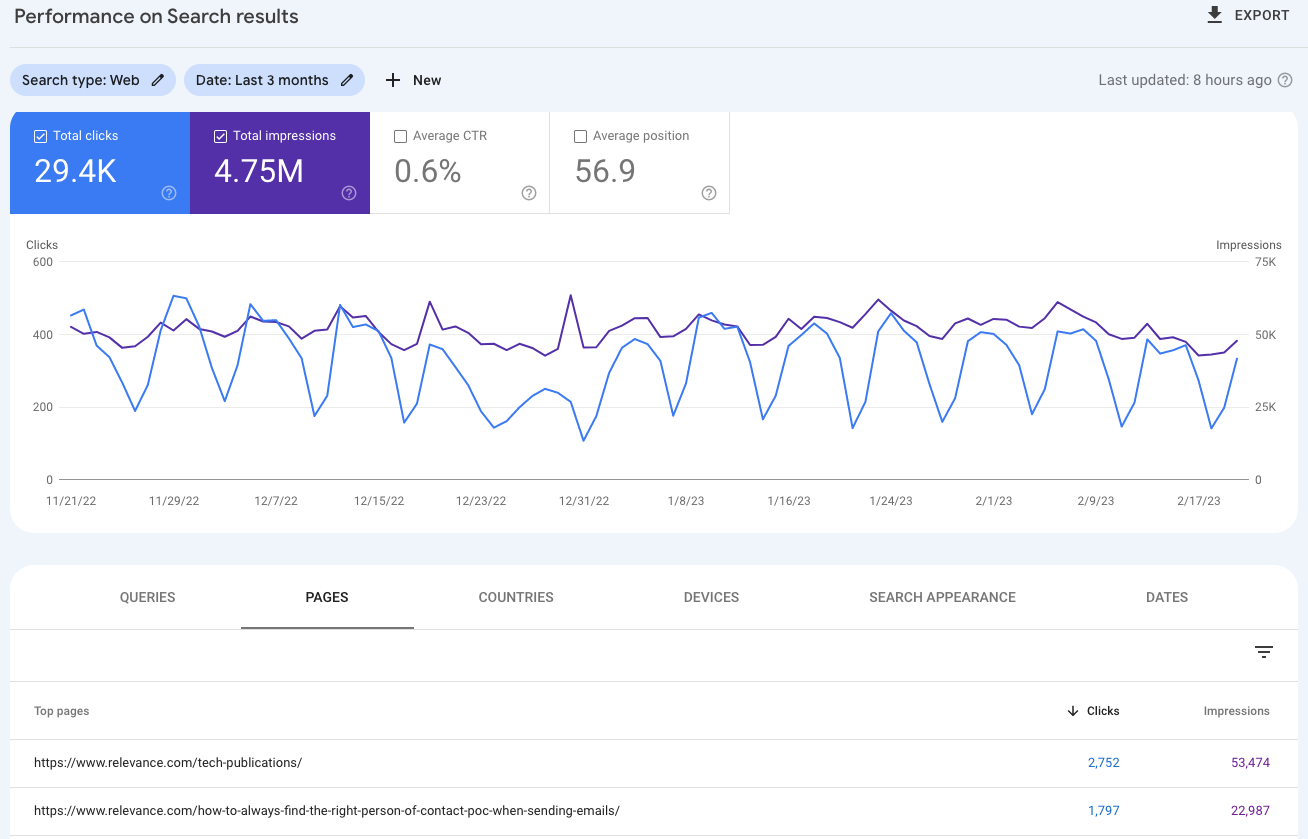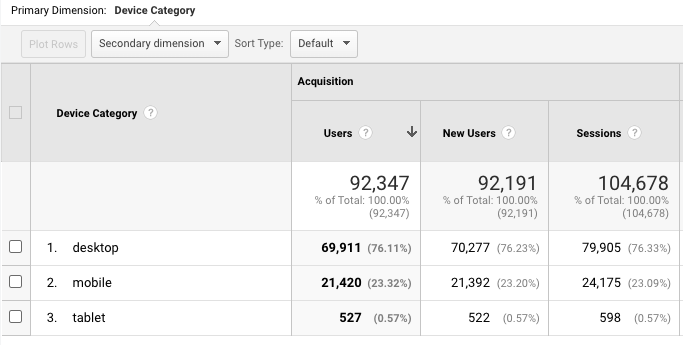You’ve set your content marketing goals. You’ve outlined your strategies. You’re ready to create some inspiring content.
When you spend this much energy on content, you want to squeeze out every last drop of value. That’s why your shiny new content plan includes a whole section on SEO strategy. Keyword research, backlink strategies, you’re here for it all.
But… does your plan include technical SEO? Or have you shied away from the technical side of things, assuming the web team has it covered?
As Rand Fishkin, co-founder of SEO software Moz, described: “Technical SEO is like the plumbing of a website - it’s not always visible, but it’s crucial for ensuring everything runs smoothly and efficiently.” And as a marketer, it should be on your radar.
What is technical SEO and how can you get started on optimizations? Here’s the inside scoop on technical SEO for beginners or seasoned marketers refreshing their SEO strategy.
Technical SEO is the optimization of your website’s infrastructure to improve its rankings in search engine results. It’s one of the four types of SEO and it’s the most - well, technical.
If your hands get a bit clammy at the mention of “technical” anything, you’re not alone. But to build a well-rounded SEO strategy, marketers should be just as familiar with technical SEO techniques as with more content-centric tactics.
As algorithms have gotten better at recognizing truly valuable content, the field of SEO has sharpened its focus on user experience. Today, Google is so sophisticated that it can usually tell when content is using less-savory SEO tactics and demote it accordingly.
Technical SEO is important because it improves your content for both people and Google:
The difference between technical SEO and SEO is that technical SEO is only one of the four main categories of SEO. The other three categories are on-page, off-page, and local SEO. These four categories all work in tandem to improve your content’s visibility and appearance on the search engine results page.
Technical and on-page SEO are often discussed together because they’re the two types of SEO that marketers have nearly complete control over. They take place mainly on your owned web properties.
While these two types of SEO are closely related, there are different tactics for technical SEO vs. on-page SEO. In terms of process, many marketers approach these optimizations as a sandwich: technical, on-page, technical.
First, the foundation of SEO is built on the technical. Before you create any content, your website should have basic technical optimizations in place. It should be mobile-friendly, have a clear site structure, and a decent load speed.
Next, it’s content creation time. On-page SEO begins with thorough keyword research. Determine which keywords your target audience is likely to search, and plan your content around them. Here are a few simple tactics to research keywords:
When you’ve chosen your keyword, use it to create high-quality content that educates and entertains. Keep the structure of your content scannable and easy to read. Weave your keyword and related keywords into your content.
Finally, when you’re ready to finish up your content, shift your focus back to technical SEO. Check that your keyword appears in the following areas:
When you publish new content, you should also make sure it’s on par with the sitewide technical optimizations you have in place. Use appropriately-sized images, SEO-friendly URLs, and accessible design. It’s helpful to use a checklist for new content so you don’t miss any opportunities - we like the Search Engine Journal’s SEO checklist.
Once you’ve finalized your content with technical and on-page optimizations, you can move on to off-page SEO tactics. The goal of off-page SEO is to earn links to your content from external sites. When your content has lots of backlinks, it’s a sign to Google that others find it helpful.
Your content will likely earn some backlinks on its own, but you should also have a backlink strategy to get as many as possible. To earn backlinks, identify trusted websites that appeal to your audience. Reach out to the person or team responsible for digital content, and craft your ask. Be sure to spell out where the link fits, your preferred anchor text, and how your content will benefit their readers.
For examples of on-page and off-page SEO, check out our post What are examples of SEO marketing?
Technical SEO can include hundreds of optimizations, so systems are your best friend in this arena. Once you get the hang of technical SEO, you can build checklists and processes that are repeatable.
There are many technical SEO tools that are free or inexpensive to use. In fact, as the world’s largest search engine, Google offers a variety of free tools such as Google Search Console, PageSpeed Insights, and Keyword Planner.

Technical SEO isn’t brain surgery, but it does involve attention to detail and many moving parts. For this reason, you can make your life easier by planning your technical SEO roadmap before getting started. Here are the most important technical SEO factors to include on your roadmap.
Now that you understand what technical SEO is and how it works with the other types of SEO, let’s get into some actionable steps. Here are four of the most important factors for technical SEO.
Your content might be insightful, actionable… incredible, really. But if it takes too long to load, no one will stick around to read it. That’s why increasing your site speed is so important.
There are many factors that impact site speed. To get a sense of where your biggest opportunities are, run your site through Google’s PageSpeed Insights tool. You’ll get reports on core web vitals such as largest and first contentful paint, first input delay, and cumulative layout shift. (Don’t worry, Google will also tell you what all these metrics are.)
Some common page speed issues are:
It’s important to note that your website will probably never score a perfect 100 in all categories. The goal of evaluating page speed is to identify the issues causing the most heartache and quick wins that can improve your technical SEO.
Optimizing the technical infrastructure of your website makes it easier to navigate for both human users and search engine spiders. This pleases the algorithm.
How can you improve your site structure? Two words: simplify and clarify. If your navigation has dropdowns in its dropdowns, it might be time to consider restructuring for a more straightforward user experience. Users should be able to get to any given piece of content with a few clicks.
When it comes to URLs, keep them clear, descriptive, and short.
One of the best ways to assess the clarity of your site’s structure is to have someone new try to navigate it. Enlist a friend, family member, or - let’s be honest - you have colleagues who don’t spend that much time on your website. Send them on a scavenger hunt to find and use your more popular features. Listen very carefully to their feedback.
You can also mine customer feedback for this information. Every marketer hasHave you ever read a suggestion or complaint from a customer survey and thought, “That’s ridiculous, we do have that. It’s on the website.” Well, the respondent didn’t find it. Time to start investigating why.
In 2017, the digital world experienced a shift. For the first time, more than half of all traffic on the internet was on mobile devices. Since then, many forward-thinking brands have moved to mobile-first design.
Do you know whether your audience primarily uses desktop or mobile? You can find out in Google Analytics under Audience > Mobile > Overview. Use this data to inform your web design decisions. In a perfect world, your website would be seamless on every device. But in reality, we have to prioritize.

Here are a few tips to help you ensure your website is mobile-friendly:
It might go without saying, but be sure to test your website on your own mobile device. Extensively. Go through processes like completing the contact form or using the search bar. If you run into unexpected frustrations, know that your users are doubly frustrated. And even worse - your competitors might have a better user experience.
For technical SEO, your website must be accessible to both people and search engine crawlers. People accessibility starts with considering that your users are different types of people on different types of devices. They might be using a screen reader. They might be asking their question to a smart device rather than typing it out. Their connection might be too slow to load images. To ensure accessibility:
Of course, search engines must also be able to easily understand your content in order to rank it. To optimize your site’s accessibility for search engines:
The bottom line of any type of SEO is: Users having a great experience on your site will probably hang around longer. Or they’ll find the answer they needed quickly and end their search. Google recognizes both behaviors and tosses that information into its swirling cauldron of algorithmic judgment.
As one of the four types of SEO, technical SEO is indispensable to your marketing strategy. To make sure your technical ducks are in a row, simplify your site structure, optimize speed and accessibility, and prioritize mobile design.